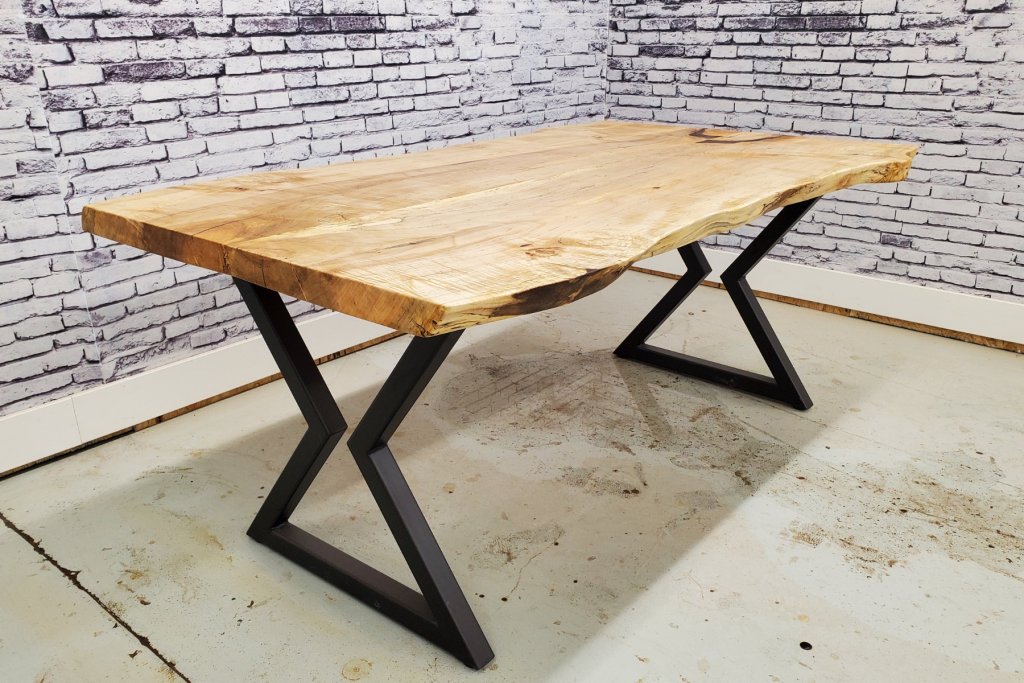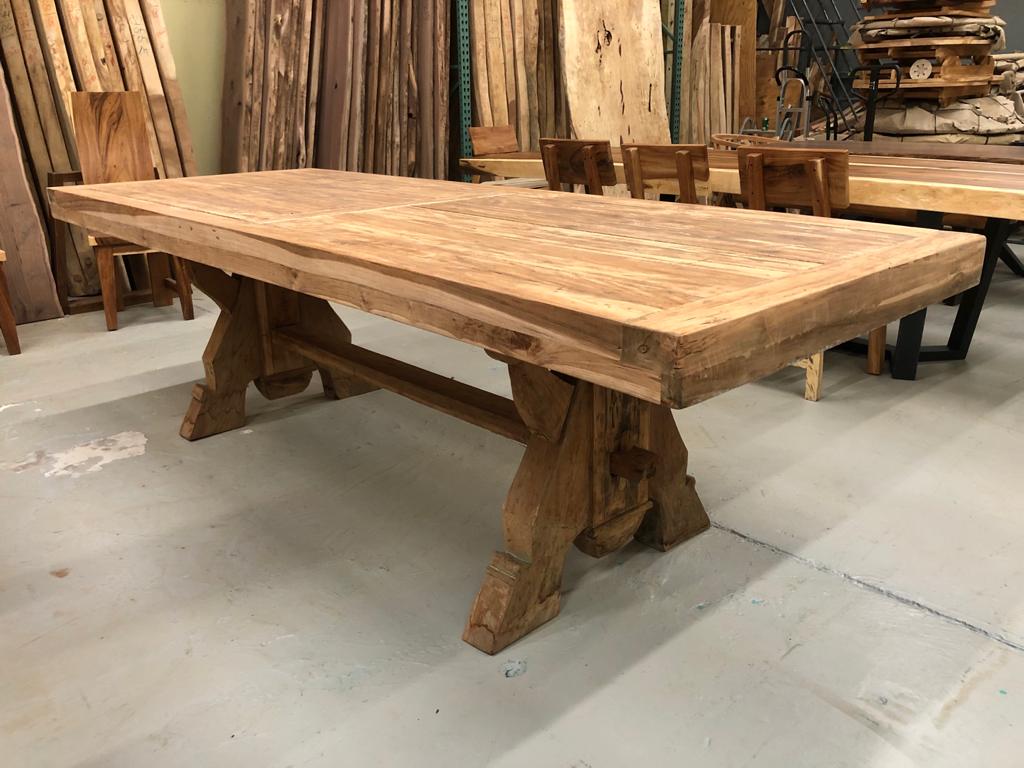Develop Spectacular Furniture with Elegant Dining Table Legs Wood Choices
Develop Spectacular Furniture with Elegant Dining Table Legs Wood Choices
Blog Article
Discovering the Various Kinds Of Dining Table Legs Timber for Your Dining Space
The selection of eating table legs timber can greatly affect both the useful and visual top qualities of your dining room. Strong wood choices, such as oak and walnut, give a timeless appearance with unrivaled toughness, while engineered wood options provide cutting-edge layouts that simulate the splendor of natural grains.
Strong Timber Options

Unlike engineered materials, strong wood is less susceptible to warping and damage over time when properly kept. Each piece of solid wood is unique, showcasing specific characteristics that include to the appeal and personality of the dining table.
Additionally, strong timber can be finished in countless means, ranging from all-natural oils to tarnished surfaces, allowing home owners to customize their furnishings to match their style. In recap, selecting strong timber for dining table legs not only ensures structural stability yet also boosts the aesthetic appeal of the eating location, making it a beneficial investment for any home.
Engineered Timber Alternatives

Plywood, created from multiple layers of wood veneer, is steady and specifically strong, making it an exceptional option for dining table legs. Its layered structure allows it to withstand modifications in moisture and temperature far better than traditional solid wood. MDF, on the various other hand, offers a smooth surface for paint or veneering, allowing designers to accomplish a refined look while keeping structural honesty.
When choosing engineered wood choices, it is crucial to think about the desired use and desired aesthetic. These products not only improve the performance of eating rooms but likewise permit for greater layout adaptability, making sure that contemporary and conventional designs can exist side-by-side harmoniously.
Reclaimed Wood Features
Recovered timber offers a distinct blend of sustainability and personality, making it a progressively popular selection for eating table legs. Sourced from old barns, manufacturing facilities, and various other structures, redeemed timber personifies a history that brand-new products simply can not duplicate. Each piece lugs its very own story, noted by distinct blemishes, knots, and varying grain patterns, which contribute to a table's distinct visual charm.
Along with its aesthetic appeal, redeemed wood is an this page eco-friendly option. By repurposing previously made use of materials, it reduces the need for new lumber, hence assisting to minimize and conserve woodlands waste. This aligns with a growing customer choice for sustainable techniques in furnishings.
Moreover, redeemed timber is commonly more sturdy than freshly gathered timber as a result of its age. The natural drying process that recovered wood undertakes outcomes in a denser and stronger material, making it less susceptible to warping and splitting. This improves the durability of dining tables, allowing them to endure the roughness of everyday use.
Softwood vs. Wood
When selecting dining table legs, understanding the distinctions in between softwood and wood is crucial for attaining both visual and practical goals. Softwoods, stemmed from coniferous trees, such as want and cedar, are characterized by their lighter weight and convenience of adjustment. They typically exhibit an even more rustic appearance, making them ideal for informal or country-style dining spaces. Softwoods are generally less durable than hardwoods, which can be a consideration for families or those seeking long life in their furniture.
On the various other hand, hardwoods, sourced from deciduous trees like cherry, oak, and maple, are renowned for their density, toughness, and toughness. The detailed grain patterns and abundant tones of woods provide a advanced and timeless allure, making them excellent for formal dining settings. While woods have a tendency to be a lot more expensive and much heavier, their resilience versus damage commonly justifies the financial investment.
Ultimately, the option in between softwood and wood for dining table legs need to straighten with your design vision, use demands, and budget plan, ensuring that your dining room mirrors your personal design while continuing to be practical in time.

Finishes and Therapies
The visual allure and long life of table legs can be substantially improved with numerous coatings and treatments. These processes not just protect the wood from damage yet also boost its appearance, permitting it to match varied interior styles.
One usual treatment is tarnishing, which penetrates the timber and improves its all-natural grain while adding color. Discolorations provide a rich, sophisticated appearance, allowing home owners to match their furniture with existing decoration. On the other hand, clear coatings such as polyurethane or varnish produce a safety layer without altering the timber's initial color, making certain resilience versus deterioration.
Additionally, all-natural oils, like tung or linseed oil, nourish the wood and supply a subtle luster, all while being eco-friendly. These oils allow the surface area to breathe, protecting against wetness accumulation and prospective bending.
For those looking Visit Website for a rustic charm, weather-beaten or troubled surfaces can be put on develop an aged look, including character to the piece. Ultimately, the option of finishes and therapies relies on individual preference, wanted looks, and the certain timber kind, making it crucial to take into consideration these variables when choosing dining table legs for your area.
Conclusion
Finally, the choice of table leg products significantly influences both the aesthetic and useful aspects of an eating room. Solid woods, crafted alternatives, and redeemed options each deal distinct advantages, dealing with numerous preferences and demands. Recognizing the distinctions in between hardwoods and softwoods, along with proper coatings and therapies, enables educated decision-making. Ultimately, the selection of timber type must align with wanted design, longevity, and ecological considerations, boosting the overall eating experience.
The choice of eating table legs timber can greatly impact both the visual and practical high qualities of your eating space - Dining Table Legs Wood. Solid timber choices, such as oak and walnut, provide a classic look with unmatched resilience, while engineered timber options provide innovative styles that mimic the richness of natural grains. Strong timber supplies a classic top quality that can raise the overall style of a dining area. Each piece of strong wood is distinct, showcasing specific features that add to the appeal and personality of the eating table
Furthermore, reclaimed visit here wood is usually a lot more durable than newly collected timber due to its age.
Report this page